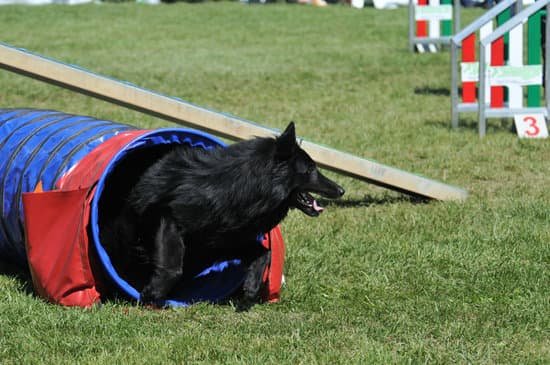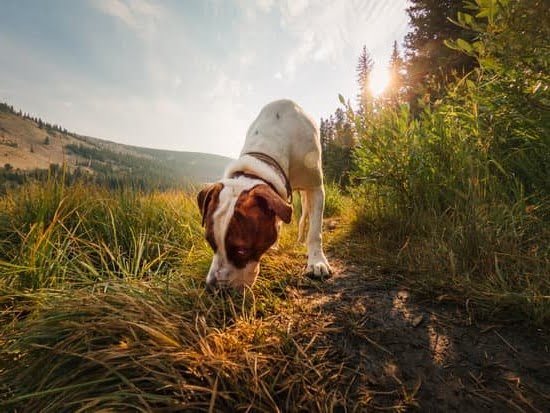House training a 4-year-old dog can present unique challenges compared to training a young puppy. However, with patience, consistency, and the right approach, it is possible to successfully teach an older dog appropriate bathroom behavior. In this article, we will explore the various factors involved in house training a 4-year-old dog and provide a step-by-step guide to help you navigate this process.
Assessing Your Dog’s Background is an essential first step in house training an older dog. By evaluating past living conditions and previous house training attempts, you can gain valuable insights into your dog’s behavior and any potential challenges that need to be addressed. Additionally, identifying any potential behavioral or health issues that may affect your dog’s ability to be house trained is crucial in developing an effective plan.
Creating a Structured Routine for Consistency and Success is key to achieving positive results in house training. Dogs thrive on routine and predictability, so establishing a consistent schedule for feeding, walking, and bathroom breaks is crucial. We will provide a detailed step-by-step plan on how to develop such a routine that ensures success in teaching your 4-year-old dog proper toileting habits.
By understanding the challenges of house training a 4-year-old dog and implementing these strategies effectively, you can set your furry friend up for success in becoming a well-behaved member of your household. So let’s dive into the process of house training an older dog and embark on this rewarding journey together.
Assessing Your Dog’s Background
When house training a 4-year-old dog, it is essential to assess their background to understand any potential challenges that may arise during the process. Evaluating the dog’s past living conditions and previous house training attempts can provide valuable insights into their behavior and habits. Additionally, identifying any potential behavioral or health issues affecting your dog’s ability to be house trained is crucial for developing an effective training plan.
Evaluating past living conditions and previous house training attempts
To better understand your dog’s current knowledge and behaviors regarding house training, it is important to assess their past living conditions. If they have lived primarily outdoors or in a situation where they were not provided with consistent house training opportunities, they may have developed habits that make the process more challenging. Conversely, if they have previously been successfully house trained but are now experiencing setbacks, their history of successful training can offer valuable insights.
Identifying any potential behavioral or health issues
It is also important to consider any potential underlying factors that may affect your dog’s ability to be house trained. Certain behavioral issues such as anxiety, fearfulness, or territorial marking can impact their progress. Additionally, health problems such as urinary tract infections or gastrointestinal issues may contribute to accidents in the house. Consulting with a veterinarian can help rule out any underlying medical conditions that should be addressed alongside the house training process.
By thoroughly assessing your dog’s background and considering factors such as past living conditions and potential behavioral or health issues, you can gather crucial information that will inform your approach to house training. This understanding will help you develop a tailored plan that takes into account your dog’s unique needs and sets them up for success in their journey towards becoming fully house trained.
Creating a Structured Routine for Consistency and Success
When house training a 4-year-old dog, establishing a structured routine is essential for consistency and success. Dogs thrive on routine and predictability, so having a consistent schedule for feeding, walking, and bathroom breaks will help them understand what is expected of them. This section will discuss the importance of a structured routine and provide a step-by-step plan to help you establish one.
The Importance of a Consistent Schedule
A consistent schedule plays a crucial role in house training your 4-year-old dog. It helps your dog understand when it is time to eat, go outside for bathroom breaks, and play. By following a routine, you are setting clear expectations that will make it easier for your dog to learn appropriate behavior.
Start by establishing set times for feeding your dog meals. Ideally, you should feed them at the same time every day. This will regulate their digestion and bathroom habits. Along with regular meals, make sure to schedule specific times for walks or outdoor play sessions. These activities not only provide exercise but also give opportunities for your dog to relieve themselves in an appropriate place.
A Step-by-Step Plan
Creating a structured routine begins with determining ideal times for feeding, walking, and bathroom breaks based on your lifestyle and the needs of your dog. Once you have established these times, follow this step-by-step plan:
- Set specific meal times: Divide your dog’s daily food intake into two or three meals spread throughout the day.
- Establish consistent bathroom breaks: Take your dog outside every two to three hours initially or as needed based on their age and size. Gradually increase the duration between bathroom breaks as your dog becomes more comfortable holding their bladder.
- Incorporate exercise: Schedule regular walks or playtime sessions to provide physical activity and give opportunities for your dog to relieve themselves outside.
- Use positive reinforcement: Praise and reward your dog when they eliminate in the appropriate spot. This will reinforce the desired behavior and motivate them to continue using that area.
- Be patient and consistent: Stick to the established routine, even on weekends or busy days. Consistency is key in successfully house training a 4-year-old dog.
Remember that each dog is different, and it may take time for them to adjust to the new routine. Stay patient, persistent, and celebrate small victories along the way. With a structured routine in place, you are setting your dog up for success in their house training journey.
Reinforcing Basic Commands and Obedience Training
When it comes to house training a 4-year-old dog, reinforcing basic commands and obedience training plays a vital role in achieving success. Obedience training helps establish boundaries and expectations for your dog, which in turn can facilitate the house training process. By reinforcing proper behavior inside the house through obedience training, you can effectively communicate with your dog and prevent accidents.
Firstly, it is important to understand the connection between obedience training and house training success. Teaching your dog basic commands such as “sit,” “stay,” and “come” not only promotes good behavior but also enables you to control your dog’s actions within the house. By having a well-trained dog that listens to your commands, you can redirect their actions when necessary, reducing the likelihood of accidents occurring.
To reinforce proper behavior inside the house, consistency is key. Practice obedience training regularly with short sessions throughout the day, incorporating positive reinforcement techniques such as treats or praise. Consistency in using the same commands and gestures will help ensure that your dog understands what is expected of them.
In addition to basic commands, there are specific techniques that can be used to reinforce proper behavior inside the house during the house training process. For example, teaching your dog to wait at doorways before entering or exiting a room can help prevent accidents from occurring when they are excited or eager to go outside.
By utilizing a command like “wait” or “stay,” you can teach your dog self-control and encourage them to ask for permission before moving around the house.
By reinforcing basic commands and obedience training, you can establish clear communication with your 4-year-old dog during the house training process. This will not only help prevent accidents but also enhance the bond between you and your canine companion. Remember to be patient and consistent in your approach, celebrating small victories along the way as your dog masters each command and demonstrates improved behavior inside the house.
Introducing the Appropriate “Bathroom Spot” Indoors and Outdoors
When house training a 4-year-old dog, it is essential to introduce appropriate bathroom spots both indoors and outdoors. By designating specific areas for your dog to relieve themselves, you can help establish consistency and reinforce proper behavior. Here are some key steps in creating appropriate “bathroom spots”:
- Identifying suitable areas: Begin by identifying appropriate areas both inside and outside your home where your dog can go potty. Outside, choose an easily accessible spot in your yard that provides privacy and a natural feel for your dog. Inside, consider using pee pads or a specific room with easy-to-clean flooring, such as a laundry room or bathroom.
- Clearing the area: Before introducing the designated spots, make sure they are clean and odor-free. Remove any traces of previous accidents using pet-safe cleaning products to eliminate odors that may attract your dog to those spots again.
- Utilizing positive reinforcement: Once you have identified the appropriate bathroom spots, use positive reinforcement techniques to encourage your dog to use them consistently. Reward them with treats, praise, and plenty of affection whenever they successfully go potty in the designated spot.
To further aid in successful house training, it is crucial to follow a consistent routine when taking your dog outside or giving them access to their indoor designated spot:
- Establish a regular schedule for bathroom breaks: Take your dog outside or lead them to their indoor spot at specific times throughout the day – after meals, upon waking up, before bedtime, etc.
- Use verbal cues: Teach your dog specific verbal cues like “go potty” or “do your business” while they are relieving themselves in the designated spot. This will help them associate these cues with going potty and make it easier for future training.
- Be patient: Understand that accidents may still happen during the training process. If your dog has an accident outside of the designated area, calmly clean it up without scolding them. Consistency and positive reinforcement are key to building trust and reinforcing the desired behavior.
By introducing appropriate bathroom spots and maintaining a consistent routine, you can greatly increase the chances of successful house training for your 4-year-old dog. Remember to reinforce proper behavior with positive reinforcement and be patient throughout the process.
Dealing with Accidents
Accidents are a natural part of the house training process, especially when it comes to older dogs. It’s important to be prepared for accidents and know how to effectively clean up after them to prevent future mishaps. In this section, we will discuss recommended cleaning products and strategies for preventing accidents in the future.
When it comes to cleaning up after accidents, it’s crucial to use the right cleaning products that not only remove odors but also deter your dog from repeating the behavior in that spot. Avoid using ammonia-based cleaners as they can resemble the scent of urine and may encourage your dog to use that area again. Instead, opt for enzymatic cleaners specifically designed to break down pet stains and neutralize odors.
| Product | Description |
|---|---|
| Nature’s Miracle Stain and Odor Remover | A popular enzymatic cleaner that eliminates stains and odors effectively. |
| Rocco & Roxie Professional Strength Stain & Odor Eliminator | A powerful enzymatic cleaner that is safe for use on various surfaces. |
| Bio-Kleen Bac-Out Stain & Odor Eliminator | An environmentally-friendly option that uses live enzymes to remove stains and odors. |
Once you have cleaned up an accident, it’s essential to prevent future mishaps by providing closer supervision and implementing confinement methods such as crate training or using baby gates to restrict access to certain areas of your home. Keeping a consistent routine for feeding, walking, and bathroom breaks will also help minimize accidents. Remember to reward and praise your dog when they successfully eliminate in the designated spot to reinforce the desired behavior.
By effectively cleaning up accidents and implementing preventative measures, you can create a clean and safe environment for your 4-year-old dog to continue their house training journey. With patience and consistency, you will be one step closer to achieving a well-trained and housebroken canine companion.
Patience and Positive Reinforcement
House training a 4-year-old dog can be a challenging process that requires patience and consistent positive reinforcement. Building trust with your dog is crucial during this training period, as it establishes a foundation for successful house training. By using positive reinforcement techniques, you can create a positive association between the desired behavior and rewards, strengthening the bond between you and your canine companion.
During the house training process, it is important to remain patient with your dog. Remember that accidents may happen, especially in the beginning stages of training. It is essential not to scold or punish your dog for these mishaps, as it can confuse them and hinder their progress. Instead, focus on reinforcing good behavior and providing gentle correction when necessary.
Positive reinforcement involves rewarding your dog for exhibiting the desired behavior. This can be done through verbal praise, treats, or toys. When your dog successfully eliminates in the designated bathroom spot, immediately reward them with praise and a treat. This helps them understand that going in that specific area is what you want them to do.
Consistency is another key aspect of successful house training. It is important to maintain a consistent routine in terms of feeding times, bathroom breaks, and walks. Dogs thrive on structure and predictability, so establish a schedule that works for both you and your pet. Stick to this routine as closely as possible every day to reinforce good habits.
By utilizing patience and positive reinforcement techniques in your house training journey, you are not only building trust with your 4-year-old dog but also setting them up for success. Your consistent actions will help them understand what behavior is expected from them in terms of eliminating indoors or outdoors. Celebrate each milestone along the way to motivate both yourself and your furry friend.
| Techniques | Description |
|---|---|
| Positive reinforcement | Rewarding your dog for exhibiting desired behavior through verbal praise, treats, or toys |
| Patience | Avoid scolding or punishing your dog for accidents and remain patient during the training process |
| Consistency | Maintain a consistent routine in terms of feeding times, bathroom breaks, and walks to reinforce good habits |
Seeking Professional Help
While house training a 4-year-old dog can be challenging, it is important to know when to seek professional help from a dog trainer or behaviorist. These experts have the knowledge and experience to address specific challenges and provide guidance throughout the process.
One key factor to consider when deciding whether or not to enlist the help of a professional is the severity of your dog’s house training issues. If your dog consistently has accidents in the house despite your best efforts, it may be an indication that there are underlying behavioral or health issues that need to be addressed.
A professional can conduct a thorough assessment of your dog’s behavior and help you develop a customized training plan based on their findings.
Another situation in which professional help may be necessary is if you have tried various training methods and techniques without success. A dog trainer or behaviorist can evaluate your current approach and suggest alternative strategies that may be better suited for your dog’s individual needs. They can also provide hands-on instruction and guidance, ensuring that you are using proper techniques and reinforcing positive behaviors effectively.
Additionally, if you find yourself feeling overwhelmed or frustrated with the house training process, it may be time to seek professional assistance. A skilled trainer or behaviorist can offer valuable support and reassurance during this challenging time. They can provide advice on how to stay patient, maintain consistency, and adjust your approach as needed.
Working with a dog trainer or behaviorist can be immensely beneficial in house training a 4-year-old dog. Their expertise can help resolve specific issues, provide additional support, and ensure long-term success. Whether it’s addressing behavioral problems or refining training techniques, seeking professional help is often a wise decision when faced with difficulties in house training an older dog.
- If your dog consistently has accidents despite your efforts
- If you have tried various methods without success
- If you feel overwhelmed or frustrated with the process
Frequently Asked Questions and Troubleshooting Tips
During the process of house training a 4-year-old dog, you may come across various challenges and have some questions about the best approach. In this section, we will address some frequently asked questions and provide troubleshooting tips to help you navigate through any obstacles that may arise.
- How long does it usually take to house train a 4-year-old dog?
- What should I do if my 4-year-old dog continues having accidents indoors?
- My 4-year-old dog seems afraid or hesitant when going outdoors to relieve themselves. What should I do?
The time it takes to house train a 4-year-old dog can vary depending on several factors, including the dog’s past experiences and temperament. While some dogs may pick up on the training quickly within a few weeks, others may take longer due to previous inconsistent or absent training. It’s important to remain patient and consistent with your training efforts, as each dog will progress at their own pace.
If your dog is still having accidents indoors despite your efforts in house training, there are a few things you can try. First, make sure you are following a structured routine and taking your dog out frequently enough for bathroom breaks. If accidents continue to occur, consider using an enzyme-based cleaner specifically designed for pet stains and odors. These cleaners will effectively eliminate any lingering smells that may encourage future accidents in the same spot.
If your dog is exhibiting fear or hesitation when going outside to potty, it’s essential to identify what might be causing this behavior. It could be related to previous negative experiences or unfamiliar surroundings.
In such cases, take the time to gradually introduce your dog to the designated outdoor bathroom area by using positive reinforcement techniques like treats or praise. Additionally, consider consulting with a professional trainer or behaviorist who can help assess the specific situation and provide tailored strategies for overcoming this reluctance.
These frequently asked questions and troubleshooting tips are designed to address common concerns that dog owners may have when house training a 4-year-old dog. Remember that every dog is unique, so it’s important to adapt these tips to suit your specific situation. With patience, consistency, and the right approach, you can successfully house train your older dog and enjoy a well-behaved canine companion.
Conclusion
In conclusion, house training a 4-year-old dog can certainly present some challenges, but with patience, consistency, and the right approach, it is absolutely possible to successfully train your furry friend. Throughout this article, we have discussed various factors to consider when house training an older dog, including assessing their background and addressing any potential behavioral or health issues that may affect their ability to be trained.
Creating a structured routine is key to achieving success in house training. By establishing a consistent schedule for feeding, walking, and bathroom breaks, you provide your dog with a clear understanding of what is expected from them. Remember to outline a step-by-step plan in order to ensure consistency in implementing the routine.
Reinforcing basic commands and obedience training are essential components of house training. By connecting obedience training with proper behavior inside the house, you can encourage your dog to follow your commands and understand what is expected of them. Utilizing positive reinforcement techniques and consistently reinforcing these commands will help reinforce good behavior indoors.
Remember that accidents may happen during the process of house training an older dog. It’s important not to get discouraged but rather focus on cleaning up quickly using effective products designed for eliminating odors and preventing further mishaps. By closely supervising your dog and utilizing confinement methods when necessary, you can also prevent future accidents from occurring.
Throughout this journey of house training your 4-year-old dog, remember to be patient and provide positive reinforcement. Celebrate small victories along the way and appreciate the progress made by your furry companion. And if at any point you feel overwhelmed or encounter specific challenges that seem insurmountable, don’t hesitate to seek professional assistance from a dog trainer or behaviorist who can offer specialized guidance tailored to your unique situation.
In the end, having a well-trained canine companion is not just about avoiding messes in the house; it’s about creating a strong bond with your furry friend based on trust and clear communication. Embrace the rewards that come with a well-trained and housebroken dog – a happier, healthier, and more harmonious life together.
Frequently Asked Questions
Is it hard to house train a 4 year old dog?
House training a 4-year-old dog can be more challenging compared to training a puppy, but it is not impossible. The difficulty may arise from certain habits and behaviors that the dog has already developed over time. However, it’s important to remember that dogs of any age can learn new things with proper consistency, patience, and positive reinforcement.
When house training an older dog, it is crucial to establish a consistent routine, provide regular opportunities for bathroom breaks outside, and closely monitor their behavior indoors to prevent accidents. Consistency and positive reinforcement will play key roles in successfully house training a 4-year-old dog.
Is a 4 year old dog too old to train?
While some people might assume that a 4-year-old dog is too old to train, this assumption is not accurate. Dogs are capable of learning throughout their lives regardless of their age. It’s never too late to implement training techniques and teach an older dog new behaviors or commands.
However, it’s worth noting that older dogs may have established routines and behaviors that need to be addressed or modified before introducing new training techniques. Taking into account the individual nature of the dog and being patient during the process will greatly contribute to successful training sessions.
How do you house break a 4 year old dog?
Housebreaking a 4-year-old dog requires consistency, patience, and positive reinforcement techniques. First and foremost, establish a designated potty area outside where you want your dog to relieve themselves regularly. Create a consistent schedule for feeding times and bathroom breaks to help regulate their digestive system and make it easier for them to anticipate when they need to go outside.
Supervise your dog closely when indoors using baby gates or keeping them on leash with you so you can quickly redirect them if they show signs of needing a bathroom break or attempting to eliminate inside the house. Rewarding your dog with treats or praise when they eliminate in the appropriate spot outdoors will help reinforce the desired behavior while providing gentle corrections or calmly removing them from an accident site indoors can discourage unwanted behavior. Remember to be patient and consistent throughout the process, as it may take some time for your dog to fully adjust and learn the new routine.

Welcome to the blog! I am a professional dog trainer and have been working with dogs for many years. In this blog, I will be discussing various topics related to dog training, including tips, tricks, and advice. I hope you find this information helpful and informative. Thanks for reading!





